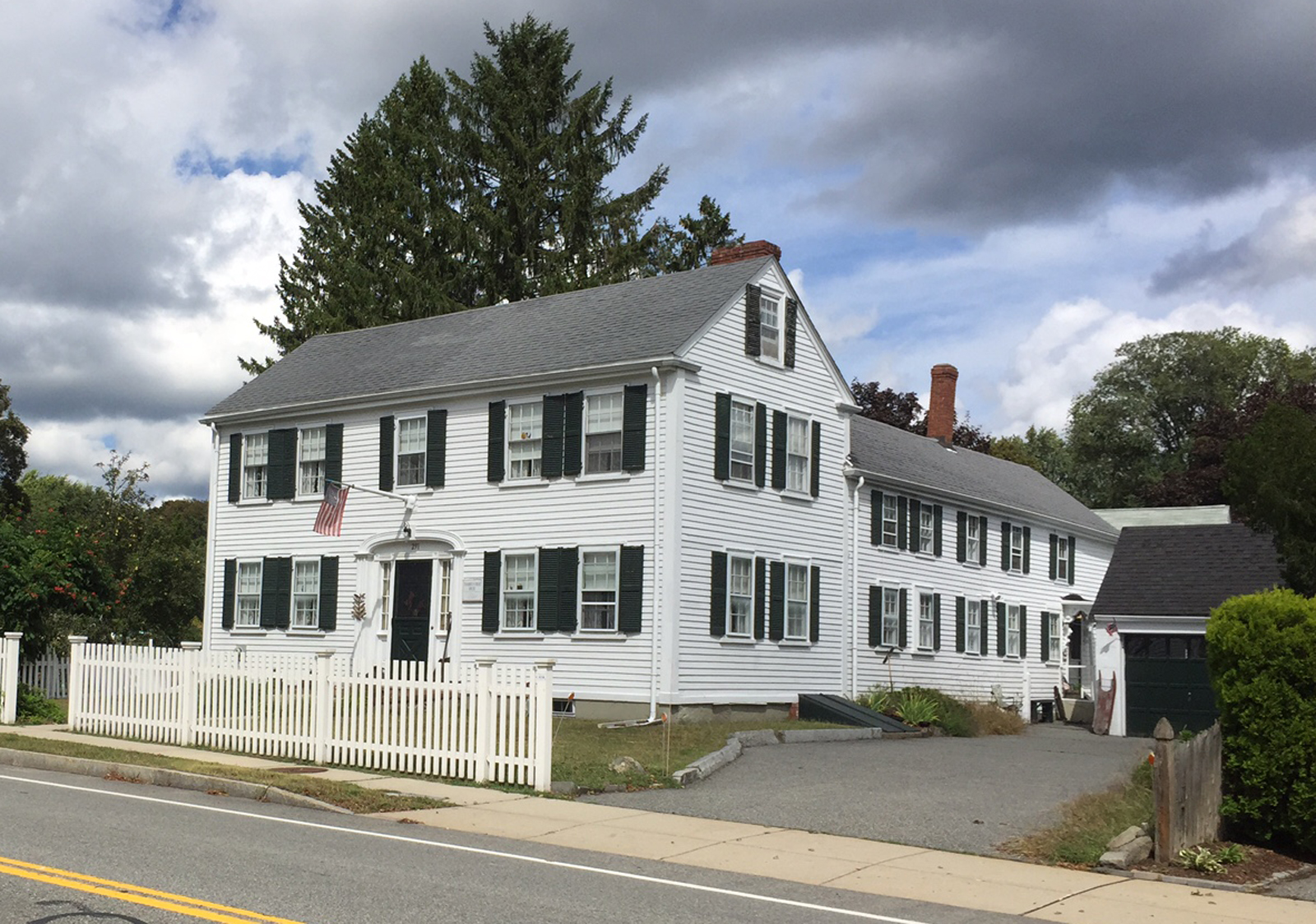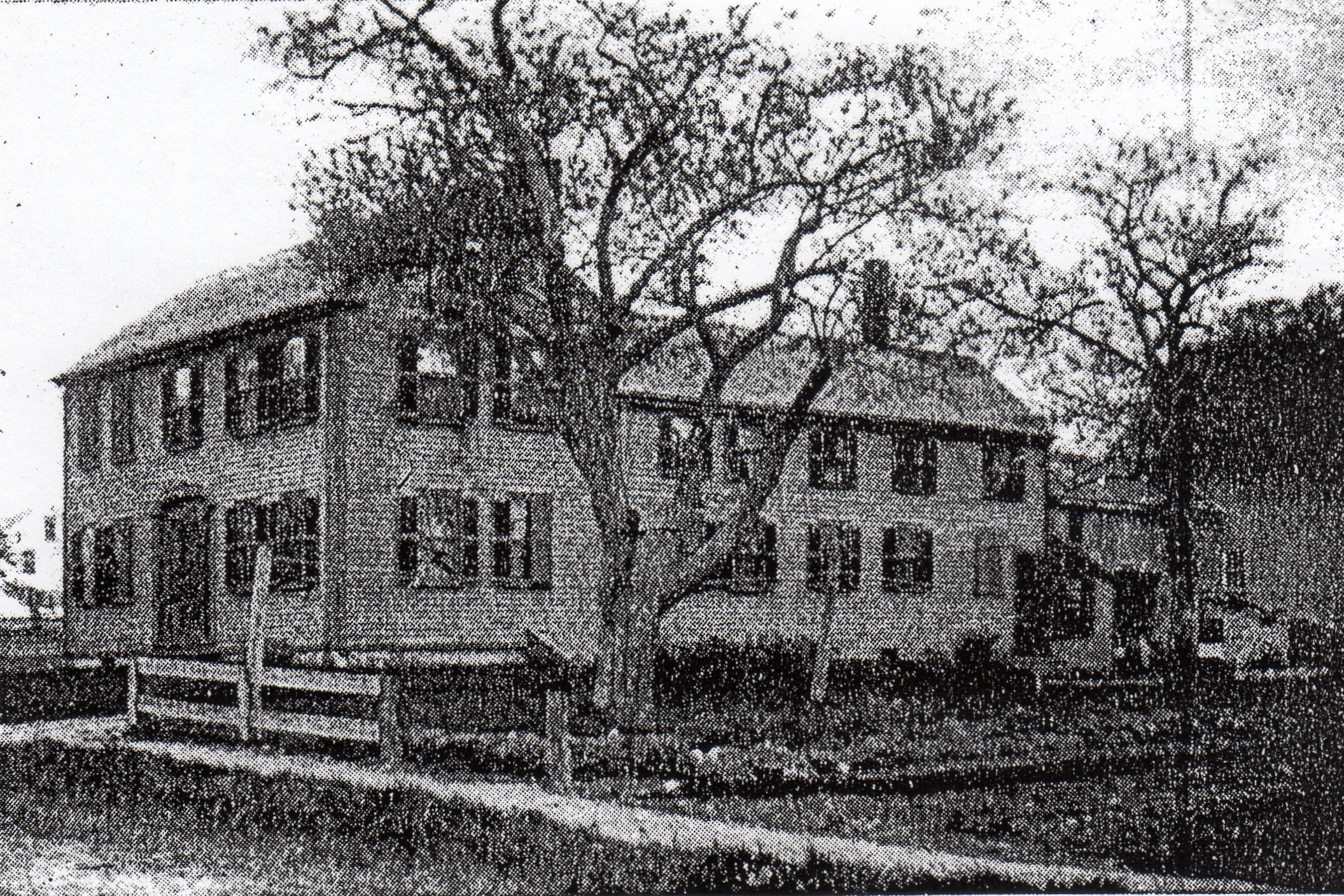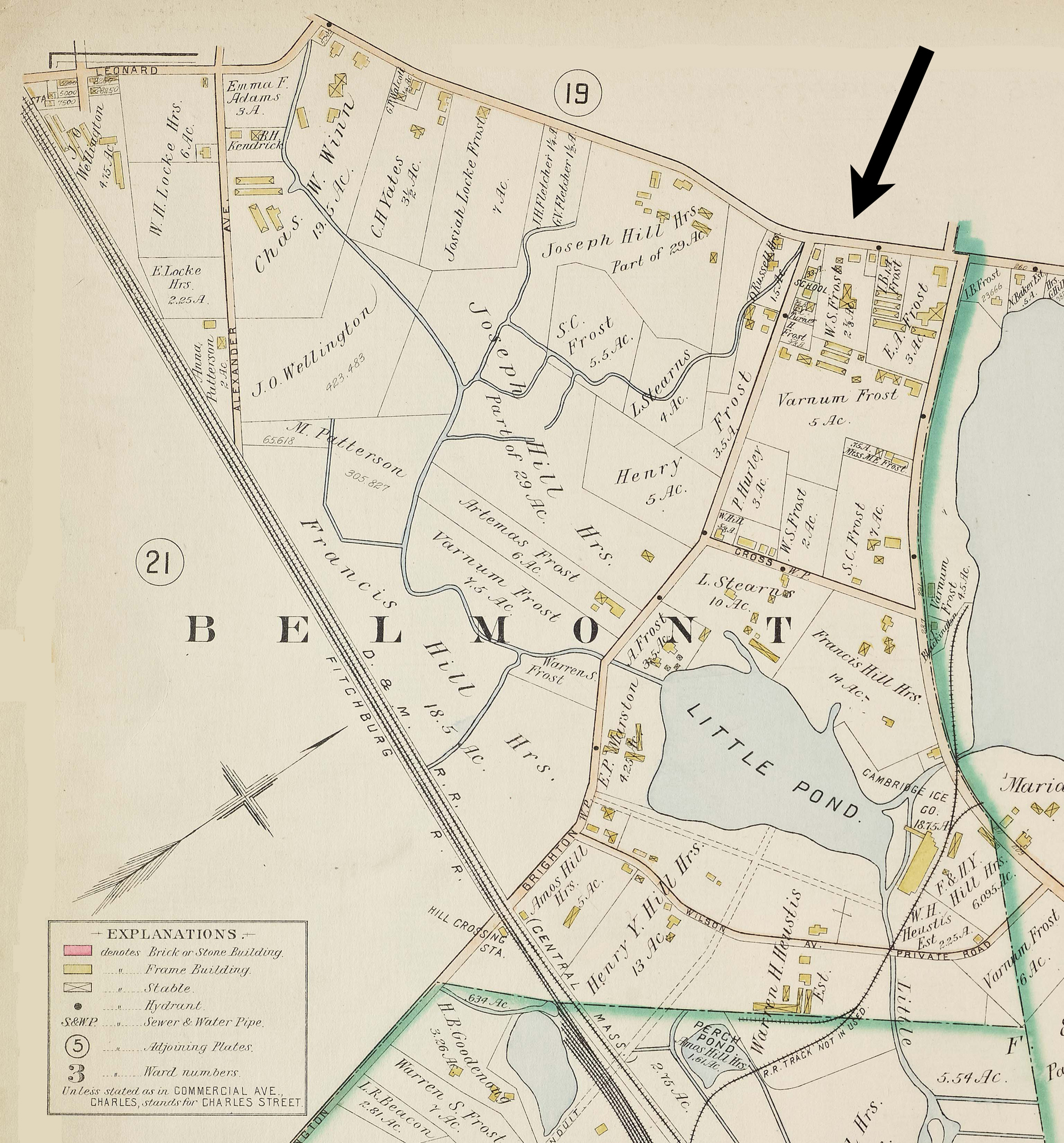
The Thaddeus Frost house today. (Spencer Gober photo)
By Lauren G. Meier
This spring, Town Meeting will consider the opportunity to create a new local historic district to protect one of Belmont’s most important historic resources, the Thaddeus Frost House on Brighton Street. In this case, the proposed district is a single property, which is allowed under M.G.L., Chapter 40C: Historic Districts. The Thaddeus Frost House on Brighton Street predates Belmont’s incorporation as a town in 1859. Colonial land grants established Watertown and Newtowne (now Cambridge) in 1630, including the land that is now Belmont. By the 19th century, large landowners, including prosperous farmers, were dissatisfied with high taxes coupled with minimal town services. After several failed attempts to incorporate a new town, proponents finally succeeded in 1859. Belmont was created out of land that had been part of West Cambridge (now Arlington), Watertown, and Waltham. By then, the Frost family was already well established in the section of town that was originally part of West Cambridge.
Thaddeus Frost was born in Cambridge in 1796. Oral histories indicate that Thaddeus built the house at 291 Brighton Street for his bride in 1827, although some secondary sources suggest the house was built as early as 1807. Frost lived in the house until his death in 1884, when his 16-acre farm passed to his son, George A. Frost. The 1875 J. B. Beers Atlas of Middlesex County shows a dozen Frosts in this neighborhood on either side of both Pleasant and Brighton Streets. Historian Richard Betts recorded this constellation of Frost families in a map he called “Land of Frost,” in The Streets of Belmont, derived from an 1898 atlas.

Thaddeus Frost House, c. 1900, showing ell and shed, from the Belmont Citizen, September 20, 1973, page 4. (Courtesy Belmont Historical Society)
In 1899, the farmhouse at 291 Brighton Street was sold to Cornelius and Isabella Bresnan, who were regionally known for their Boston Market Celery. In the 1940s, the house was sold twice: Richard Loring Rablin and his wife Jessie purchased it in 1944, and in 1946, the Frost farm was subdivided, with Arthur Road added in 1947 on the northwest side. The Rablins owned the house until 1965, when it was sold to the current owner, Athena McInnis, who has cared for this historic treasure with her late husband, George, for more than half a century.
What Are Local Historic Districts?
The Historic Districts Act, Massachusetts General Laws, Chapter 40C, established a local designation and review process to protect and preserve historic resources. Local historic districts are an effective form of preservation because they are created through local bylaws that ensure improvements will protect historic character. Historic districts can be created from a single property, like 291 Brighton Street, or multiple properties. While the Thaddeus Frost District would be Belmont’s first single-property historic district, many other communities have used this method to preserve their most important historic assets.
Historic districts can be created from a single property, like 291 Brighton Street, or multiple properties.
By contrast, listing on the National Register of Historic Places is largely honorary, although it does afford limited protection from state or federal actions. National Register listing is determined by the National Park Service via the Massachusetts Historical Commission and does not require approval by the municipality. Belmont now has a handful of National Register listings, two of them National Register Districts with multiple properties (McLean Hospital and Pleasant Street). Thus, there is a difference between historic districts listed on the National Register of Historic Places and those that are created and approved by a municipality.
Belmont now has three locally designated historic districts. The Richardson Farm Historic District is the most recent, established in 2013. In all of Belmont’s local historic districts, proposed changes to exterior elements visible from a public way may require a Certificate of Appropriateness from the Belmont Historic District Commission (HDC) before a building permit can be issued. The HDC’s goal is to work with landowners to help them care for and improve historic properties. Staff planner Spencer Gober in the Office of Community Development, who is assigned to the Historic District Commission, has greatly increased the efficiency of the process.

The “Land of Frost” along Brighton Street between Pleasant Street and the Fitchburg Railroad. (Atlas of Middlesex County, Boston: George W. Stadley & Co., 1900.)
But local historic district designation is not for everyone. Although new districts normally require the support of the current owner, the designation passes to subsequent owners. Exterior changes that are visible from a public way may require design review and approval, depending on the exact scope of work, which can take an extra step and some time before a project can proceed. However, general maintenance and interior changes do not require review and the HDC provides for emergency actions.
Critics argue that the restrictions associated with a local historic district can reduce property values, but several studies conducted by the National Trust have produced evidence to the contrary: historic preservation enhances property values. Some communities have alternative methods in place to protect historic resources such as local landmark designation. Some use conservation or preservation districts to retain neighborhood character without requiring a design review. In Belmont, the only tool now available is local historic district designation.
Establishing the Historic District
In the summer of 2017, Athena McInnis approached the HDC asking to create a local historic district to protect the Thaddeus Frost house. The house was already on a Town Meeting-approved List of Significant Buildings subject to the Demolition Delay Bylaw, but that bylaw does not prevent demolition, nor does it protect the property’s significant features against changes short of demolition.
The house had been identified as significant as early as the 1960s, when the Historic American Building Survey studied colonial and federal period resources west of Boston. In 1993, the Massachusetts Historical Commission (MHC) prepared a written opinion that the house was significant for its association with the Frost family and its role in the market gardening industry in the Winn Brook section of Belmont and for being one of the few surviving federalstyle residences in Belmont. Lisa Mausolf, author of the update to the Belmont Historic Resources Survey, prepared a new inventory form for the property, completed in 2016 following MHC standards. With this foundation in place, the Historic District Commission could help the owner protect one of Belmont’s most important historic resources.
In summer and early fall 2017, historian and HDC member Michael Chesson, PhD, conducted historical research, working closely with the Belmont Historical Society. Chesson’s report reviews the property’s history, significance, and preservation need. The draft report was submitted to the MHC in October 2017 for the required 60-day review, and the MHC recommended the town proceed with establishing the district. In January 2018, the HDC held a public hearing to present the study’s findings and solicit public input. The proposed district will be on the warrant for the 2018 spring Town Meeting. If approved, it will be incorporated into the town’s General Bylaws and added to the Massachusetts State Register of Historic Places.
Lauren G. Meier, ASLA, is co-chair of the Belmont Historic District Commission, member of the Land Management Committee for Lone Tree Hill, and a trustee of the Judy Record Conservation Fund.


Sorry, the comment form is closed at this time.